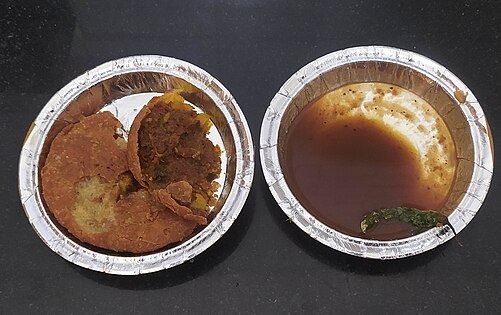 Pyaaz Kachori with mint & green chilli chutney | |
| Alternative names | Kaanda Kachori |
|---|---|
| Course | Snack |
| Place of origin | |
| Region or state | Jodhpur, Rajasthan |
| Associated cuisine | Indian |
| Serving temperature | Hot or Warm |
| Main ingredients | Maida (flour), onions, Besan, Ghee |
Kanda Kachori or Pyaaz Kachori (transl. Onion Kachori) is an Indian crispy, flaky, deep-fried pastry filled with spiced onion stuffing. [1] [2] It is typically served hot with a sweet and spicy tamarind chutney. [3] Originating in the city of Jodhpur, it is now served throughout Rajasthan and rest of India. [4]


